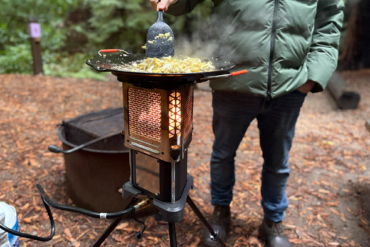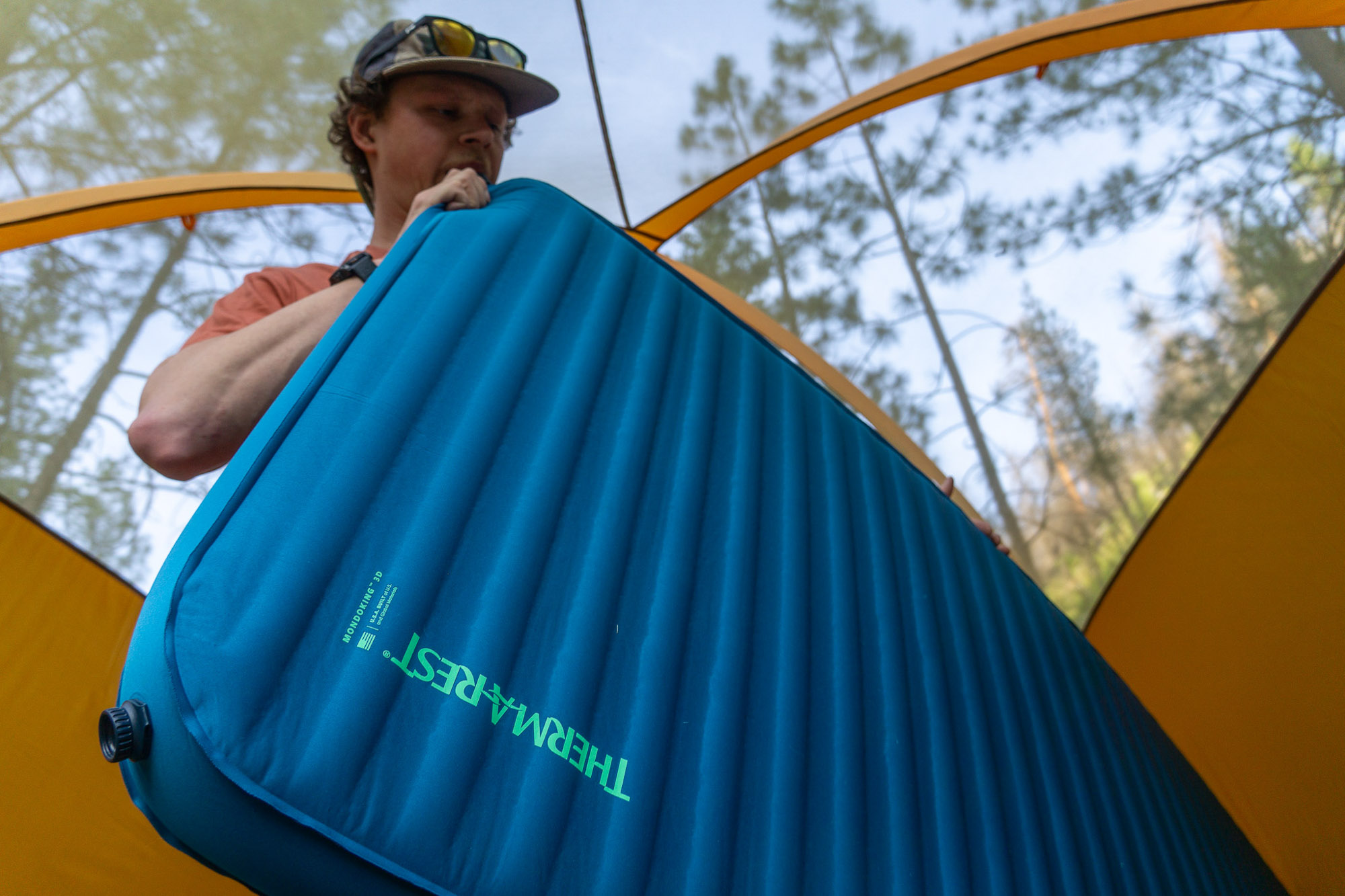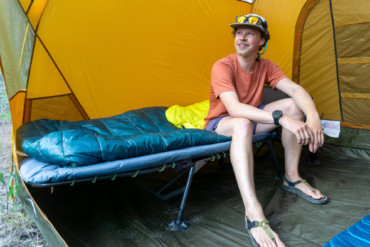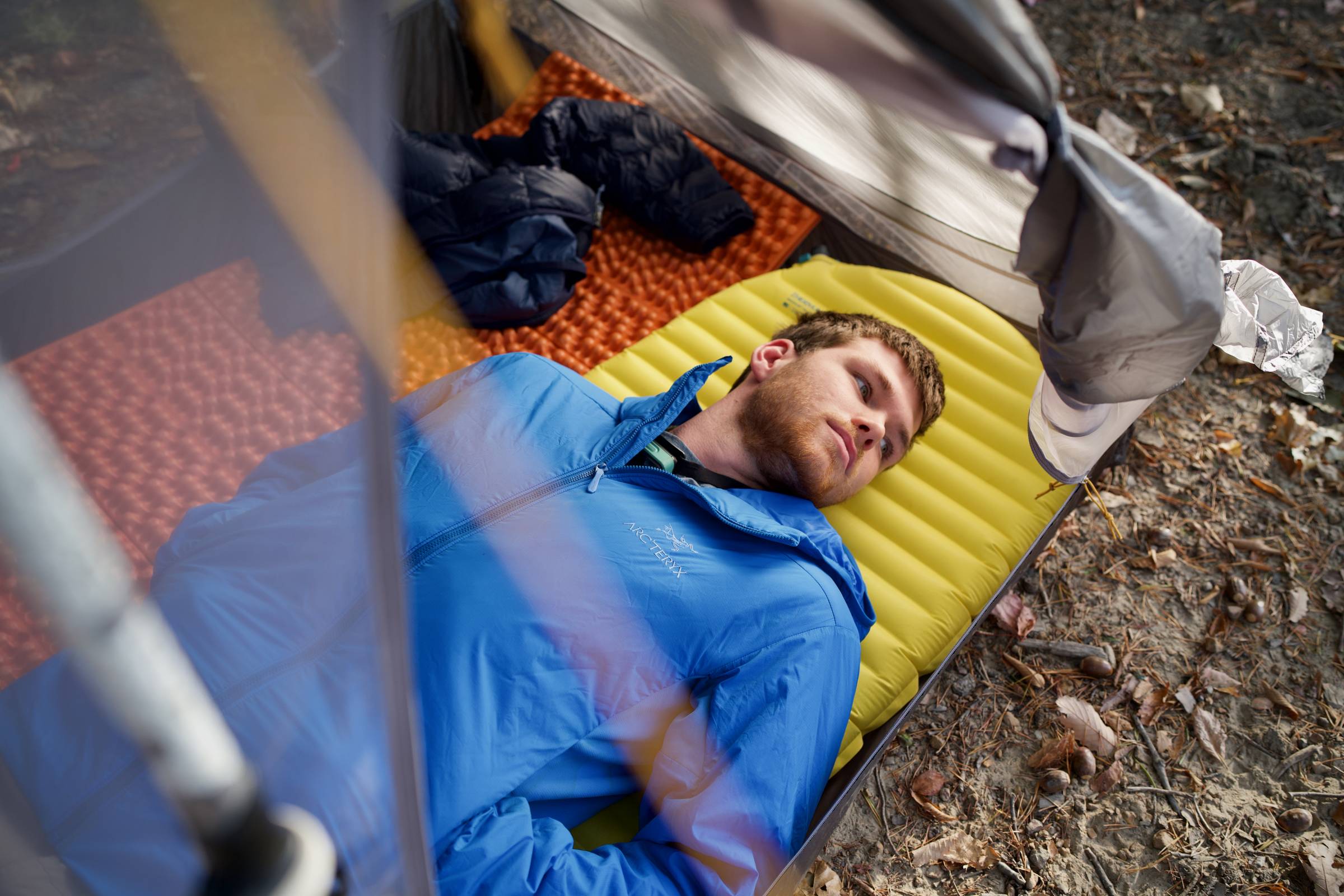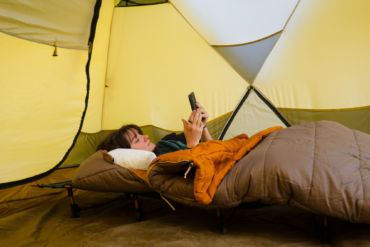Sierra Designs builds great three-season, non-freestanding tents that cut weight by using trekking poles for support. We tested the just-released Divine Light last summer while backpacking in Idaho’s Payette National Forest.

Kids still fast asleep, I silently slipped out the tent’s large side door, reached under the vestibule to snatch the cook kit and brew up a pot of coffee. This wasn’t just any backpacking trip – this was our family’s first backpacking trip.
Guide, cook, camp counselor, and parent: It was my job to ensure a smooth backcountry experience. So bringing a two person tent for our family of four (two adults, two kids) was admittedly a stretch.
But it provided a good test for Sierra Designs’ forthcoming Divine Light.

Tested: Divine Light 2 FL (Feather Light) Tent
Who’s it for: Space- and weight-conscious backpackers who are looking for a livable space in a three-season shelter.
Included: Hybrid single wall/double wall shelter, DAC poles (two straight vertical poles, a single arced foot box pole), 11 stakes, four guylines, Night Glow (headlamp compatible light diffuser), tent stuff sack, stake and pole stuff sack.
Optional: Footprint ($40 aftermarket).
Made in: China.
Non-Freestanding Tents

Before the dome tent, non-freestanding tents were the norm (think the pup tent). But with ultralight backpacking ethos slipping into mainstream gear, its taken on a new spin. Since a seasoned backpacker always carries trekking poles into the backcountry, why not double down on that investment and cut out a handful of ounces by replacing traditional tent poles with … your trekking poles?
This isn’t a new idea, but it inspired a new line of tents for Sierra Designs. In 2014, Sierra Designs revamped its iconic and beloved Flashlight, swapping the traditional clip system with a straight pole system (leave the kit poles at home and save six ounces by swapping in your trekking poles).
Last year the Sierra Designs Tensegrity literally flipped traditional tent space on its head with an “inverted” non-freestanding design that yawned from a narrower footprint to a wider head space.
Blending the best of both worlds, it’s no surprise this year Sierra Designs evolved its compatible trekking pole configuration with the new inverted wall space to bring the versatile Divine Light. Minimal and airy, the Divine Light is billed as a lightweight livable camp space.
Setting Up the Divine Light
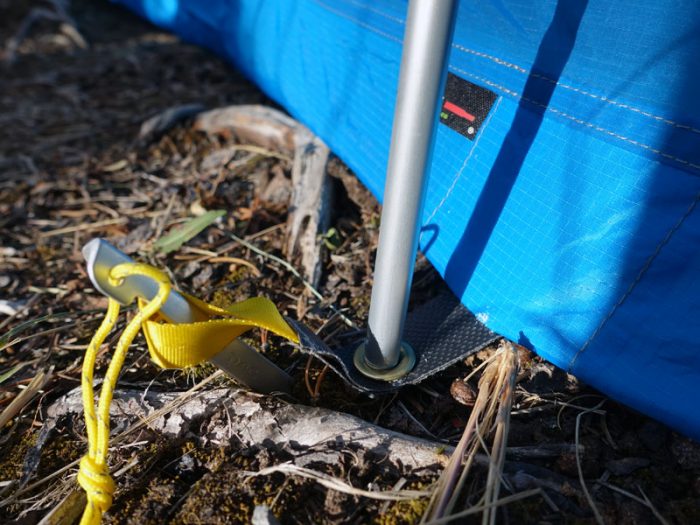
The Divine Light sets up similarly to its sister tent, the Tensegrity. Start by staking out the four corners of the tent and evenly staking out the forward awning triangle flaps. Slot the tip of the pole (or trekking pole) into the grommets and extend the poles into the apex of the awnings, adjacent to the door.
Next, stake out the side awnings guylines. Finally, clip the single arched pole into the footbox of the tent and stake out the single guyline extending off the footbox. Cinch the tent down taught and you’re all set.
Configuration
 The Divine Light has two side doors, one for each camper. Each J-shaped zipper door is composed of a no-see-um mesh and a protective nylon panel that can unzip and tie back, out of the way.
The Divine Light has two side doors, one for each camper. Each J-shaped zipper door is composed of a no-see-um mesh and a protective nylon panel that can unzip and tie back, out of the way.
Each door is protected by a 10-inch awning which angles off the peak of the tent and wing forward to provide additional side protection out front.
The vestibule extends off the front of the tent and zips onto the pair of forward reaching awning triangles. This seals off the gear garage and protects your kit from foul weather. Pitch it up with a pair of trekking poles and you’ve got yourself a shady porch for hot summer afternoons. Or, roll the entire vestibule back for maximum exposure. The convertible vestibule is extremely versatile.
The vestibule can be accessed from the tent through a U-shaped door or from outside the tent.
Ventilation
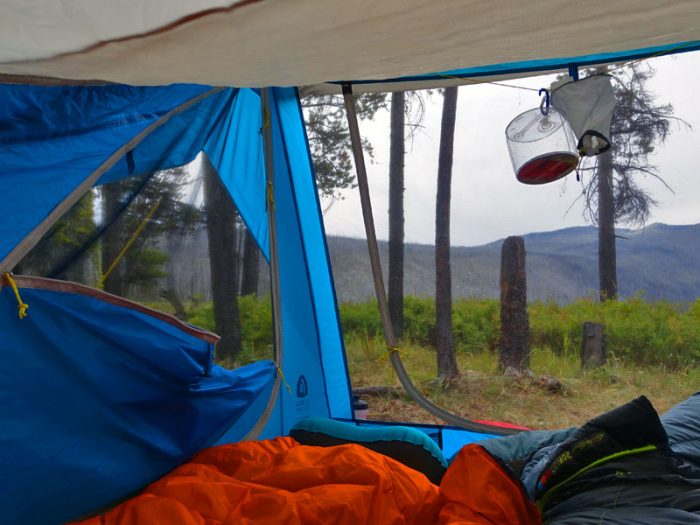 The configurable design negotiates superior protection with ample cross ventilation or anywhere in between. Vestibule door unzipped and side panels cracked, the tent ventilated well enough for our party of four to stay dry inside.
The configurable design negotiates superior protection with ample cross ventilation or anywhere in between. Vestibule door unzipped and side panels cracked, the tent ventilated well enough for our party of four to stay dry inside.
That said, condensation rained down on the inside of the vestibule where the moist air collected. We don’t advise bunking four mouth breathers in the tent!
Pros and Cons
Pros:
- The Divine Light managed to shed the awkward, box kite look that the Tensegrity bore. The structure is stable in three-season weather (sustained 20 mph winds). In fact, videos on Sierra Designs’ site show wind tunnel tests on the boxier Tensegrity sustaining upwards of 50 mph winds.
- The three-door design provides an easy exit and keeps gear within quick reach.
- Above average ventilation without compromising weather protection.
- The inverted space design, with a wider ceiling than floor, truly elevates the internal livable space. This makes time inside the tent an enjoyable experience as opposed to a necessary evil.
- We found that the J-shaped side door zips were more ergonomic than the pair of straight zippers that enclose the Tensegrity doors.
- Stuff a headlamp into the translucent, Night Glow bag and boom: you got yourself a nice, soft glowing tent lamp.
Cons:
- The Achilles heel of any non-freestanding tent are the stakes. There are lots of them (11) and they get finicky in rocky soil.
- For maximum protection, the tent needs to be pitched taught. The tent may sag under evening moisture.
- Pitching the vestibule as a shade shelter requires an extra pair of poles (backpackers will likely have these if trekking in pairs) or require you to get creative with guyline configuration. Day trips out of base camp with trekking poles used for tent support means your tent lays flat on the deck.
- While the tent can be set up solo, because of it’s non-freestanding nature, it’s easier to set it up with a buddy.
Divine Light 2FL
- Minimum Weight: 3 lbs 1 oz
- Packaged Weight: 3 lbs 15 oz
- Doors: 3
- Dimensions (L x W): 88 in x 50 in (Head) / 46 in (Foot)
- Floor Area: 29.3 sq. ft
- Vestibule Area: 10.3 sq. ft
- Peak Height: 45.5 in
- Packed Size: 14 in x 6.5 in
- Guylines: 4
- Stakes: 11 DAC J-Stake
- Poles: 3 (2 peak; 1 arching for foot box)
- More Info/Buy now: $320 (1 FL), $390 (2 FL, tested)
Materials
- Poles: DAC NSL / DAC Pressfit
- Fly fabric: Silicone coated 20D Nylon Ripstop
- Floor fabric: 30D Nylon Ripstop
- Body fabric:15D Nylon; No-See-Um Mesh
- Footprint: 70D Nylon Taffeta (available, but not included; $40)
Why This Tent?
With a bevy of non-freestanding tents under the Sierra Designs banner, it’s easy to ask “why this tent?”
Prioritizing weight, we’d go with the Tensegrity (Elite model, skirting just under 2 lbs for a tent sans poles). But if it’s protection you’re after, then consider the Divine Light.
With its fully side-protected vestibule upgrade and added awning protection over the doors, the Divine Light will set you back a pound (but puts a Benjamin back in the wallet). With it you buy a bit of flood insurance that can pay dividends when the going gets wet.




